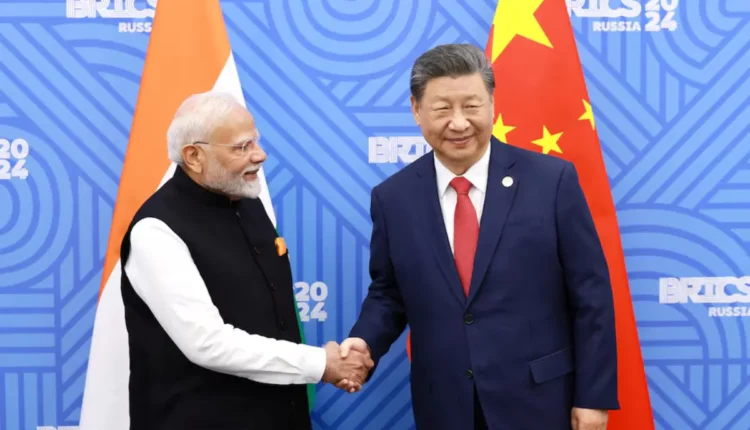China and India Move Toward Peace: Xi Jinping and Narendra Modi Strengthen Ties
China-India Relations Improve as Xi Jinping and Narendra Modi Pledge Cooperation
In a significant step toward mending relations between two of the world’s most populous nations, Chinese President Xi Jinping and Indian Prime Minister Narendra Modi met on Wednesday to discuss boosting communication, cooperation, and resolving conflicts that have strained ties for the past four years. The leaders’ first formal talks in five years occurred on the sidelines of the BRICS summit in Kazan, Russia, signaling a potential thaw in a diplomatic rift sparked by the 2020 military clash along their disputed Himalayan border.
This meeting is seen as a critical moment for the future of China-India relations, which have been tense since a deadly confrontation in the Ladakh region led to the deaths of 20 Indian soldiers and four Chinese troops. The aftermath of the clash saw both nations ramp up military presence along the disputed frontier, with thousands of soldiers and advanced weaponry stationed on both sides.
India and China: Boosting Communication and Cooperation
Chinese state broadcaster CCTV reported that during the meeting, President Xi stressed the need for both countries to strengthen communication, cooperation, and work together to resolve their differences.
Xi emphasized that by maintaining peace and stability, China and India could achieve their respective development goals, a sentiment shared by Prime Minister Modi. Modi, in his response, underlined that ensuring peace along the border should be a top priority for both nations, adding that the foundation of their relationship should rest on mutual trust, respect, and sensitivity.
Modi stated, “We welcome the agreement on the issues that had come up over the last four years. It should be our priority to maintain peace and tranquility on the border. Mutual trust, mutual respect, and mutual sensitivity should be the basis of our relationship.”
This moment comes after New Delhi’s announcement earlier this week that an agreement had been reached to resolve the military stand-off in Ladakh. Diplomatic discussions have picked up momentum in recent months, with foreign ministers from both nations meeting in July to accelerate talks aimed at easing tensions.
Signs of Diplomatic Progress
The Kazan meeting marks the first substantial bilateral talks between Xi and Modi since their last summit in 2019. While they briefly exchanged words during multilateral events, such as the G20 summit in Bali in 2022 and the BRICS summit in Johannesburg in August 2023, the depth of Wednesday’s discussions signals that both sides are willing to move forward after years of diplomatic gridlock.
The meeting also follows a period of intensified diplomatic efforts, with both countries recognizing that easing tensions along their Himalayan frontier is essential to improving broader political and business ties. Since the clashes in 2020, India has made it clear that restoring relations would require resolving the border dispute. This has led to increased scrutiny of Chinese investments in India, the blocking of direct flights, and strict visa restrictions for Chinese nationals.
However, with the recent agreement to resolve the military stand-off, there is now a growing expectation that China’s investments into India could resume and relations might start to normalize, particularly in trade and business sectors.
Also Read:India and Pakistan Extend Visa-Free Kartarpur Corridor for Five More Years

